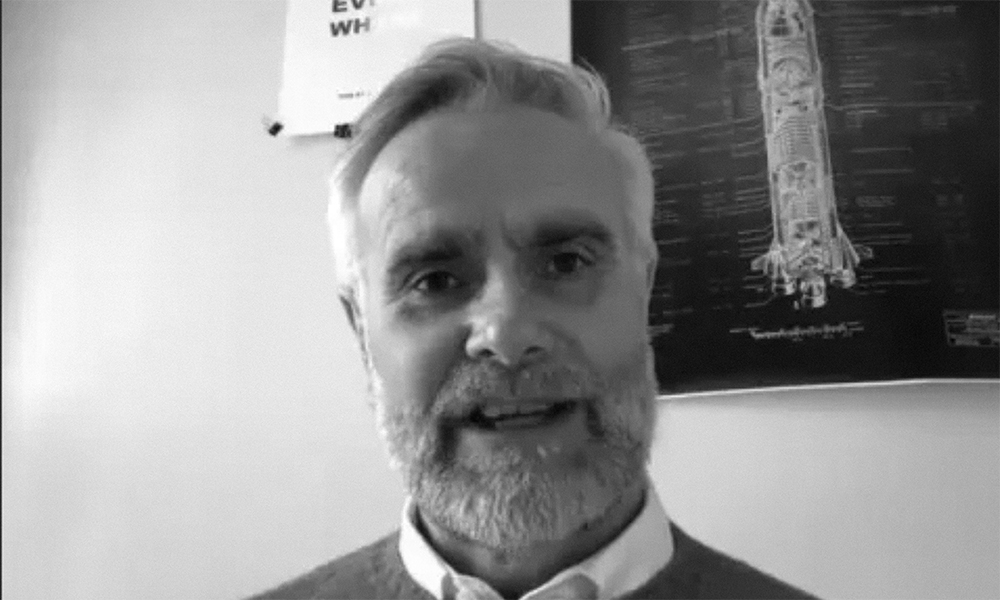
There are lots of reasons to innovate, but in the case of commercial organizations, they typically center on growth. Although you will have a core business, developing new and aligned products that broaden your offering is a well-established business strategy. Especially in uncertain times, the more strings to your bow and the more customer problems you can solve, the better. In a world where Mckinsey Global predicts $14 – $33 trillion of value could be gained from new disruptive technologies before 2025, there is a big incentive out there to succeed too.
Today, game-changing new products seem increasingly difficult to develop. Our modern, fast-moving digital world means tools have become hugely complex, and require highly-skilled multi-disciplinary teams to get right. The struggle to gain any kind of competitive edge through product development appears, now more than ever, to be amongst the toughest of team sports. This is why, at NTT DATA Business Solutions, we have explored numerous co-innovation projects and have leaned into collaboration as a desirable approach to business development.
Choosing the right partner
We have worked jointly with many organizations such as research institutions, universities and members of our supply chain. For this article, however, I would like to focus on a project we developed with a customer. Scheidt & Bachmann is a family-owned global market leader in mobility solutions. It has a history dating back to the 19th century rail industry, but more recently has gained a track record in the broader transport sector. Its specific interest lies in supplying products and managed services to the car park monitoring, transport ticketing and train signaling sectors.
Success in partnerships always comes from bringing two complementary but different organizations together. It is hard to realize any genuine co-innovation benefits if you come from similar backgrounds, provide the same services or have duplicated skills.
Success in partnerships always comes from bringing two complementary but different organizations together. It is hard to realize any genuine co-innovation benefits if you come from similar backgrounds, provide the same services or have duplicated skills. Scheidt & Bachmann and NTT DATA Business Solutions are not alike but we do share aligned technologies and an understanding of the markets we work in, their problems and, importantly, the opportunities they present.
As a company, Scheidt & Bachmann has developed a huge amount of know-how about tracking and, specifically, low-energy Bluetooth beacon technology. We have equivalent SAP implementation and integration experience. Neither of these features is particularly unusual, of course. The unique opportunity we spotted, however, was bringing the two businesses together to develop a new indoor shop-floor Real Time Location System (RTLS). With such a new tool, we could simplify logistics for manufacturing clients by reducing location data scanning requirements during, and in between, production processes.
Preparing the ground
Framed around an industry problem, Scheidt & Bachmann and NTT DATA Business Solutions established that we had a robust product idea that had a significant potential customer base. Despite this strong starting point, our approach to development still took three years of discussion to finalize. This is perhaps a useful reminder that, when it comes to co-innovation, patience is often a virtue.
Once agreed, there were some clear compliance steps to undertake before we could make a start. In Europe, we had to have clearance from our legal colleagues regarding competition legislation, for example. Equivalent market controls exist in other jurisdictions so moving ahead without clarification on such issues could prove a frustrating expensive mistake.
Partnership agreements and contractual arrangements vary in style and substance. In this case, we formed a new separate Joint Venture to develop our new product. Importantly, this was not to hide any aspect of our relationship. On the contrary, it was felt a combination of two organizations with healthy market shares and strong brand reputations was a strength. A new commercial entity, however, meant issues of ownership were clear and led to easier, quicker decision-making. It is also worth noting that we entered into the arrangement with a huge sense of optimism, as one might enter a marriage, but mutually acceptable terms for any ‘breakup’ were considered at an early stage too, in the interests of fairness and transparency.
Teamwork in action
A signed agreement does not, of course, necessarily inherently lead to success. The bringing together of talent in a strong working relationship is key. In fact, in this case, it is the idea’s Unique Selling Point (USP). Other experts in Bluetooth beacon hardware and SAP implementation exist, but we are not aware of any other joint enterprises where the two skills are so strongly, and seamlessly, interlinked.
A signed agreement does not, of course, necessarily inherently lead to success. The bringing together of talent in a strong working relationship is key. In fact, in this case, it is the idea’s USP.
The Joint Venture itself operates through a core team of roughly ten personnel from both sides of our partnership. Its small size makes devising and implementing a ‘go-to-market’ plan manageable and our customers, importantly, experience one focused entity when talking to us. It is an agile and responsive unit well-suited to reacting to the trials of taking a new product to market. This does not suggest the Joint Venture is working in isolation, though. Far from it. The team can reach back into two big, hugely knowledgeable organizations for additional, specialist expertise when required.
Our team’s work is not theoretical. Having a partner that operates a manufacturing process itself means we can easily demonstrate the product. We encourage customers to visit the Scheidt & Bachmann facilities or take advantage of online video evidence. Thanks to co-innovating with the right partner, we have created a product that can be seen working first-hand.
Co-innovation in uncertain times
Even if you ultimately land on the right solution, developing new products without embracing external expertise is likely to be expensive and overly cumbersome. Collaboration, in comparison, gives you a speedier, more agile methodology. It is ideally suited to today’s marketplace uncertainties because it opens doors, unearths opportunities and acts as an effective catalyst for new growth.
Even if you ultimately land on the right solution, developing new products without embracing external expertise is likely to be expensive and overly cumbersome. Collaboration, in comparison, gives you a speedier, more agile methodology.
The location system we are developing with Scheidt & Bachmann, alongside a raft of other projects, adds to a growing body of evidence that the theory works in practice. Co-innovation provides real, tangible business benefits and surely should be part of every technology business’s strategy in these uncertain, challenging times.

















































